The Best Beef Short Ribs Recipe with Root Vegetables
We may earn a commission from recommended products, at no extra cost to you. See Disclosure.
- Oven-safe pot
INGREDIENTS
- 2½ pounds/1.2 kilogram beef short ribs, bone in (you can also use lamb)
- 2 cups dry red wine
- 2 red onions, quartered
- 1 white onion, quartered
- 1 parsley root, peeled
- 1 celery root, peeled
- 6 small sweet potatoes, peeled
- 1 leek, cut into wide strips
- 1 garlic head, halved
- 10 small portobello mushrooms
- 1 tablespoon coarse salt
- 1 teaspoon ground black pepper
- ⅓ cup olive oil
Sauce (mix in bowl):
- 1 heaping tablespoon sweet paprika
- 4 tablespoons date syrup/honey
- 2 tablespoons dry red wine
- 2 garlic cloves, pressed
- 2 tablespoons olive oil
- 1 cup water
INSTRUCTIONS
- In a large oven-safe pot, heat up the oil over medium heat. Arrange the onions at the bottom, place the short ribs on top and fry until the meat is seared on all sides. Pour over a cup of wine and cook until the liquid is reduced.
- Preheat the oven to 300 F (150 C). Add the vegetables to the pot and pour another cup of wine. Pour the sauce over the vegetables and ribs, then add a cup of water to the empty bowl, mix well and pour into the pot. When the stew is bubbling, season with salt and pepper, cover and bake for 4 hours.
- Uncover the pot and cook for another 30 minutes, until the liquid is reduced and a deep, beautiful dark color is obtained.
MY NOTES
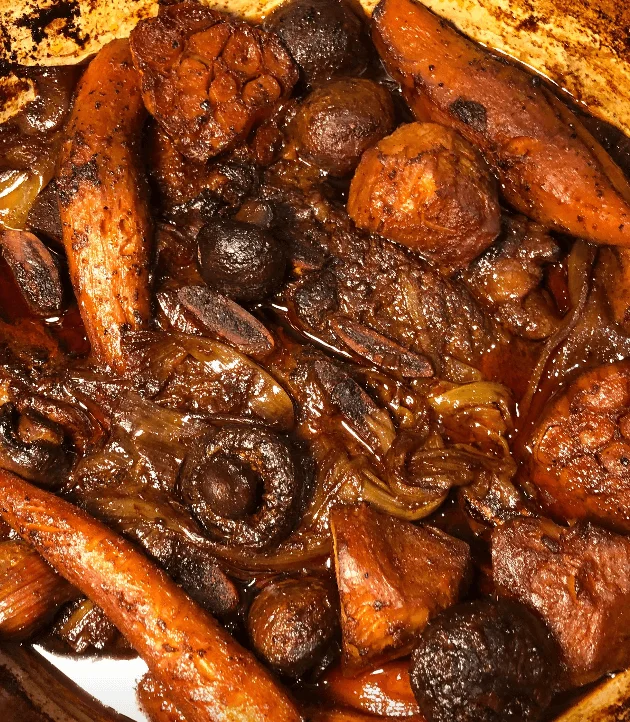
FAQ
What vegetables go with this beef short ribs recipe?
To complement the savory richness of beef short ribs, consider pairing them with a medley of roasted root vegetables like carrots, parsnips, and sweet potatoes. The natural sweetness and earthy flavors of these vegetables beautifully complement the meat’s deep flavors. Additionally, steamed or sautéed greens such as spinach or kale can provide a fresh and nutritious contrast. Don’t forget to serve with a side of fluffy mashed potatoes for a comforting and satisfying meal.
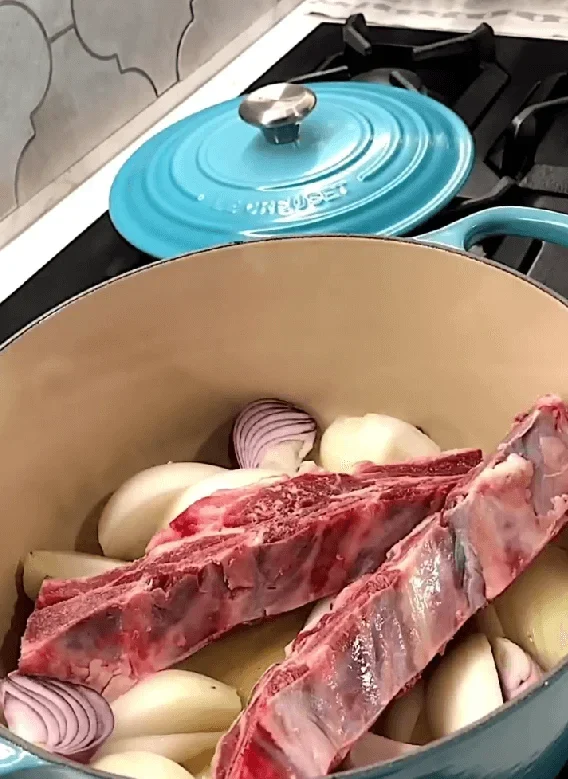

Do short ribs get softer the longer you cook them?
es, short ribs typically become softer and more tender the longer they are cooked. Short ribs are known for their tough and chewy texture, but with extended cooking times, they can transform into a melt-in-your-mouth delicacy.
The toughness of short ribs is due to the connective tissues and collagen present in the meat. These connective tissues need to be broken down through slow, low-temperature cooking methods to achieve tenderness. When short ribs are cooked for an extended period of time, the collagen breaks down into gelatin, which adds richness and a silky texture to the meat.
Braising is a common cooking technique used for short ribs, where they are first seared to develop a flavorful crust, and then simmered in a liquid (such as broth, wine, or a combination) for several hours until the meat becomes tender. The long cooking time allows the collagen to break down gradually, resulting in tender and succulent short ribs.
It’s worth noting that the exact cooking time required can vary depending on the size and thickness of the ribs, as well as the cooking method and temperature used. But in general, longer cooking times at lower temperatures will yield the most tender and flavorful results for short ribs.

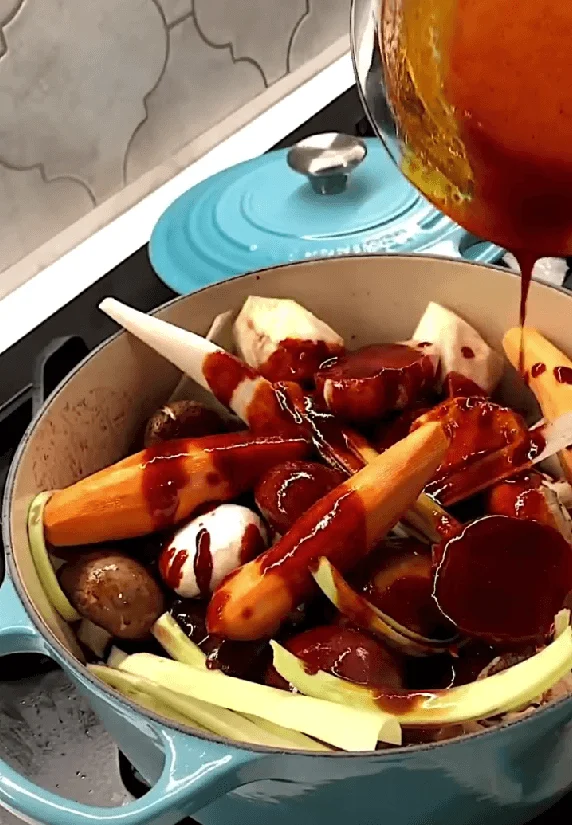
Can you slow cook short ribs too long?
Yes. If you cook short ribs for too long, even if the oven temperature is low, they will start to dry.
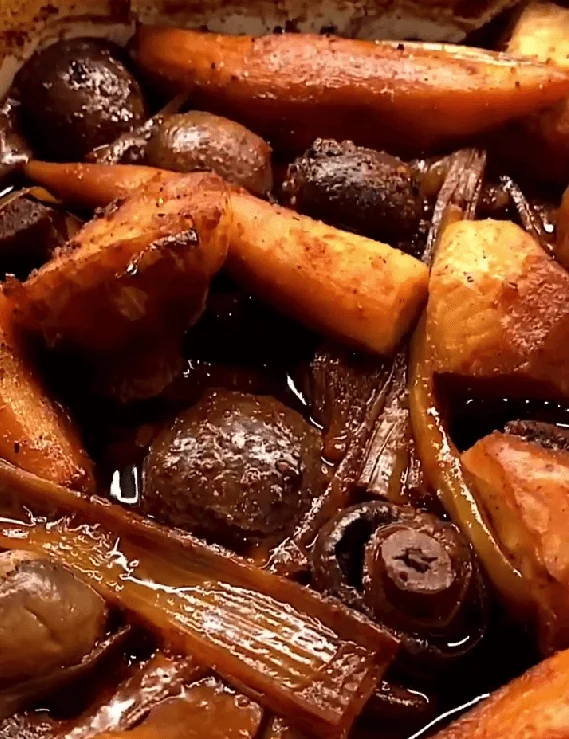
What is the difference between short ribs and beef ribs?
Short ribs and beef ribs are both cuts of meat from the same animal, which is typically beef. However, there are some differences between the two:
Cut and Size: Short ribs are cut from the plate or rib section of the beef, closer to the belly. They are typically cut into short lengths, usually about 2-3 inches in length, with meat and bones attached. Beef ribs, on the other hand, are cut from the rib section closer to the back of the animal. They are generally larger and longer than short ribs, often 6-8 inches in length.
Meat-to-Bone Ratio: Short ribs have a higher meat-to-bone ratio compared to beef ribs. Short ribs are known for their rich marbling and a good amount of meat surrounding the bones, which contributes to their flavor and tenderness. Beef ribs, while still having some meat attached, have more bone in relation to the amount of meat.
Cooking Methods: Short ribs are commonly braised or slow-cooked to break down the tough connective tissues and achieve tenderness. They benefit from long, slow cooking to render the collagen and fat, resulting in a flavorful and succulent dish. Beef ribs can also be braised, but they are often grilled or smoked. Due to their larger size, they are well-suited for these high-heat cooking methods.
Flavor and Texture: Short ribs have a rich, beefy flavor with a good balance of fat and meat. When cooked properly, they become tender and moist with a melt-in-your-mouth texture. Beef ribs also have a beefy flavor, but they tend to be meatier and chewier than short ribs. The larger bones in beef ribs can contribute to a more intense flavor as well.
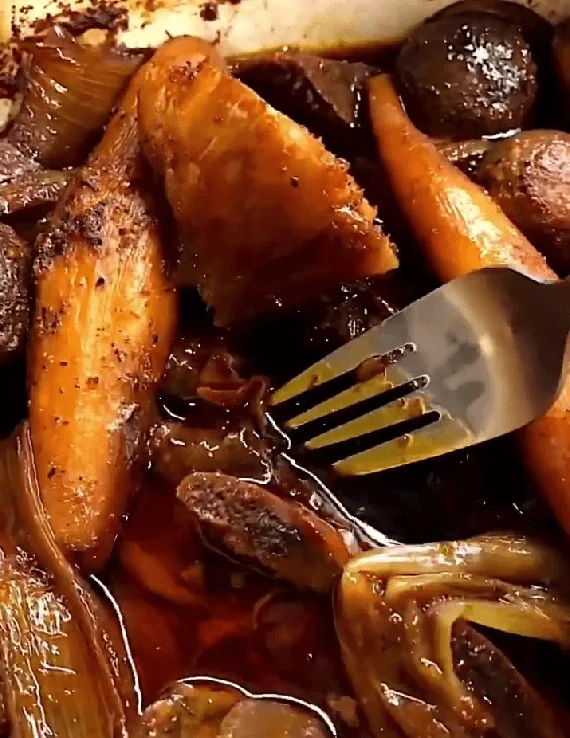
what make the best beef short ribs recipe?
Creating the best beef short ribs recipe involves a combination of factors that contribute to flavor, tenderness, and overall enjoyment. Here are some key elements to consider when making the best beef short ribs recipe:
Quality of the Ribs: Start with high-quality beef short ribs. Look for well-marbled ribs with good meat coverage. The marbling of fat throughout the meat adds flavor and helps keep the ribs moist during cooking.
Seasoning: Properly seasoning the ribs is essential. Generously coat the ribs with a mixture of salt, pepper, and any other desired seasonings such as garlic powder, onion powder, paprika, or herbs. Let the ribs sit with the seasoning for at least 30 minutes, or even overnight in the refrigerator, to allow the flavors to penetrate the meat.
Searing the Ribs: Before slow cooking the ribs, sear them in a hot skillet or on a grill to develop a flavorful crust. Searing creates a caramelized exterior that enhances the overall taste and appearance of the dish.
Slow Cooking Method: Opt for a slow cooking method such as braising or using a slow cooker. Braising involves cooking the ribs in a liquid, such as beef broth, red wine, or a combination of both, at a low and steady temperature for an extended period. This method breaks down the tough collagen in the meat, resulting in tender and succulent ribs. A slow cooker offers convenience and is great for hands-off cooking.
Flavorful Liquid: Choose a flavorful liquid to braise the ribs. Beef broth, red wine, or a combination of the two are popular choices. You can also add aromatics like onions, garlic, carrots, and herbs to enhance the flavor of the cooking liquid.
Low and Slow Cooking: Cook the ribs at a low temperature for a long time. This slow and gentle cooking allows the collagen to break down gradually, resulting in tender meat. Aim for a temperature around 275-325°F (135-163°C) and cook for several hours until the meat is fork-tender.
Basting and Basting Sauce: While the ribs are cooking, baste them periodically with the cooking liquid to keep them moist and infuse them with additional flavor. You can also create a basting sauce by reducing and thickening the cooking liquid toward the end of cooking. Brush the sauce onto the ribs during the final stages of cooking or as a finishing glaze.
Resting: Once the ribs are cooked, allow them to rest for a few minutes before serving. This helps the meat reabsorb its juices and ensures optimal tenderness and flavor.
Remember, the best beef short ribs recipe is also subjective and can vary depending on personal preferences.

